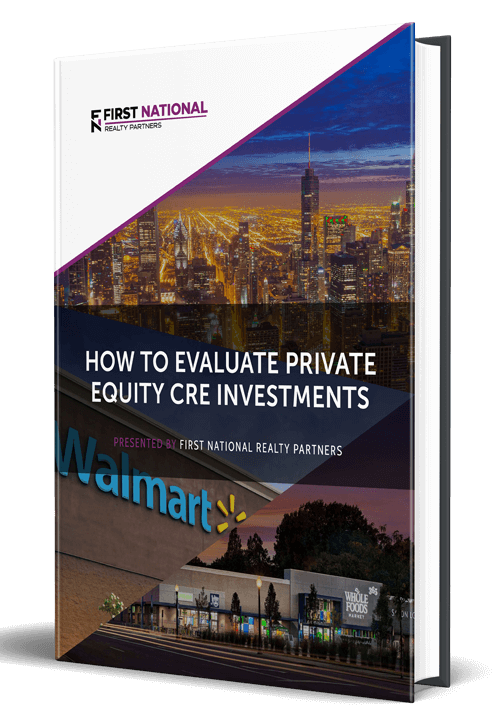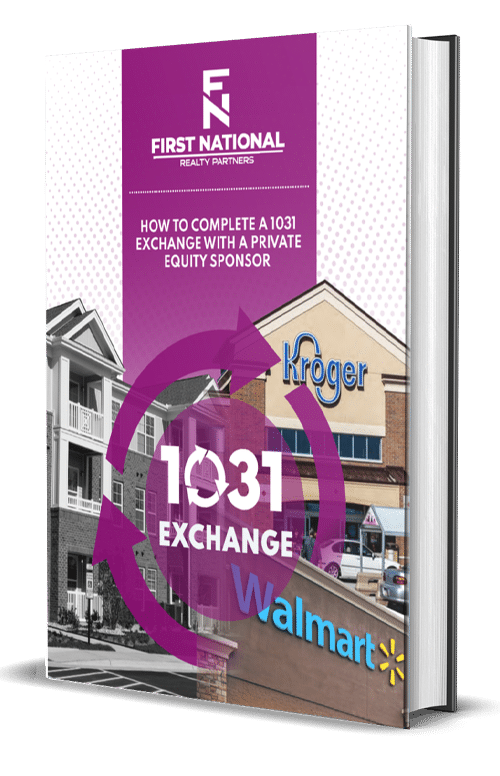Cities are exciting, vibrant places. They’re teeming with energy and, while it’s not noticeable on a day to day basis, constantly in a state of change. In some cases, change can be a powerful force that improves the lives of many. In others, it has the potential to leave a city’s most vulnerable residents and communities behind.
For decades, civic leaders have struggled with how to structure support programs that both assist vulnerable residents and incentivize investment in their communities with mixed results. But, in 2017, the federal government created a new and somewhat novel program that encourages real estate developers to allocate investment capital to distressed areas through the use of tax incentives.
The program received inclusion in the 2017 Tax Cuts and Jobs Act and produced something called “Qualified Opportunity Zones” – economically distressed areas – for which powerful tax incentives were created meant to spur economic development and job creation in such areas throughout the United States and its possessions. The Opportunity Zones Program has been an attraction for real estate investors in the commercial real estate space since it has been announced.
What Are Real Estate Opportunity Zones?
The IRS defines an Opportunity Zone as “an economically-distressed community where new investments, under certain conditions, may be eligible for preferential tax treatment.”
The idea behind identifying real estate Opportunity Zones and their preferential tax treatment is simple, to define the areas of greatest need and create an incentive for private investment to flow into them. In doing so, the resulting projects would create jobs and income that can be further reinvested into the community in a harmonious cycle meant to lift the community out of distress. As state and local leaders learned of the program, they rushed to identify potential Opportunity Zones in their communities.
Opportunity Zone Requirements
A locality or community may qualify as an opportunity zone if they meet certain income and location criteria and if they’ve been nominated for such designation by the state. Once presented, the nomination must be certified by the Secretary of the U.S. Treasury via his delegation of authority to the Internal Revenue Service.
Although the legislation is fairly recent, it’s proven to be popular. In the wake of its passage, thousands of areas have been qualified as real estate Opportunity Zones throughout the United States and its territories. It has the potential to become one of the largest programs with the goal of developing low-income communities. A complete list of approved real estate Opportunity Zones can be found in Revenue Bulletin 2018-48 where they’re organized by State, County, and Census Tract.
The Tax Incentives of Investing in an Opportunity Zone
As the IRS Opportunity Zone definition suggests, the incentive for investing in a distressed community is preferential tax treatment designed put idle capital into motion in two steps.
First, the incentive creates a mechanism that allows investors to liquidate an existing investment and defer capital gains taxes on it by re-deploying the proceeds into something called a “Qualified Opportunity Fund.”
Once invested, the incentive allows for a reduction, deferral, or elimination of capital gains taxes on the Opportunity Fund investment, depending on how long it’s held. If it’s held for more than 5 years, there’s a 10% reduction. If it’s held for more than 7 years, there’s a 15% reduction. And, if it’s held for more than 10 years, capital gains taxes are eliminated completely through a step up in basis equal to 100% of the market value of the investment at the time it’s sold or exchanged.
Opportunity Zone Implications
For decades, the 1031 Exchange program has been the gold standard for tax efficient real estate investing. However, the creation of real estate Opportunity Zones and the possibility of eliminating taxes all together may give the 1031 Exchange a run for its money. While the Opportunity Zone program was largely overlooked at the time the bill was passed, it’s now clear that it has the potential to both transform distressed communities nationwide and save individual taxpayers a substantial amount of money in the process.
In doing so, it’s also created a cottage industry around the creation of Qualified Opportunity Funds to accommodate the thousands of investors seeking to take advantage of this unique opportunity.
Qualified Opportunity Funds
A Qualified Opportunity Fund is “an investment vehicle that files either a partnership or corporation federal income tax return and is organized for the purpose of investing in Qualified Opportunity Zone property.” To receive an Opportunity Fund designation, the private partnership or Corporation must self-certify by filing a form with their federal tax return and meet the following requirements:
- Property must be purchased after 12/31/2017
- Must hold at least 90% of its assets in a Qualified Opportunity Zone. Holdings are calculated as the average percentage of Qualified Opportunity Zone property held on the last day of June and the last day of December. If the percentage falls below 90%, the fund may be subject to penalties.
- If a property ceases to be in an Opportunity Zone, it will continue to be treated as such for the lesser of five years or the date it’s sold.
Requirements for Deployment of Capital
Once established, the partnership or corporation must commit to maintaining compliance with rules related to how they deploy their capital. Specifically, Opportunity Funds must deploy investor capital in:
- Real estate or other hard assets within the boundaries of a Qualified Opportunity Zone
- A business where most (or all) of the operations are run in a qualified Opportunity Zone
- A partnership with a business operating in a qualified Opportunity Zone
Individual Investment in Qualified Opportunity Funds
An Opportunity Fund must be a corporation or partnership so there are high barriers to entry for an individual investor looking to create one on their own. However, investment managers nationwide, us included, have been setting up Opportunity Funds and providing individual investors with an opportunity to invest in them. An individual can do so in three steps:
- Tap Equity/Gains from Current Investment: Individuals sitting on significant capital gains from stock, bond, or real estate investments must first liquidate their holdings.
- Roll sales proceeds into an Opportunity Fund: Once sold, the proceeds must be rolled into a designated Opportunity Fund within 180 days. There is a myriad of Opportunity Fund investments available so it’s important for each individual to find the right manager and the right opportunity suitable for their risk tolerance and time horizon.
- Wait: There are three tiers of beneficial tax treatment. If the investment is held for more than 5 years, then Capital Gains taxes are reduced by 10%. If the investment is held for more than 7 years, taxes are reduced by 15% and if the investment is held for more than 10 years, Capital Gains taxes are eliminated completely.
Benefits of Opportunity Fund Investing
Obviously, the potential for eliminating taxes is an incredibly powerful incentive that makes an investment in an Opportunity Fund worthy of consideration, but there are ancillary benefits as well:
- Increased Portfolio Diversification: Because real estate price movements tend to have a low level of correlation with publicly traded stocks and bonds, adding exposure to real estate can provide a degree of diversification to an investor’s portfolio.
- Social Benefits: Because Opportunity Funds are specifically required to deploy their capital into areas that need it the most, there’s some social good that comes from the investment. If deployed correctly, some of the country’s most economically vulnerable residents will benefit with new jobs and income to support their families and communities.
- Retirement Planning: When managed correctly, Opportunity Fund investments can be a vital component in helping individual investors plan for retirement by accelerating tax free growth of their portfolio.
Drawbacks to Consider When Investing in an Opportunity Zone
Despite the significant benefits, an Opportunity Fund investment may not be a suitable investment for everyone. There are risks and drawbacks to consider. Specifically:
- Loss of Principal: By definition, investment capital is flowing into economically distressed areas that may not have the infrastructure to support it. As such, it’s not guaranteed that all projects are going to be successful. Careful thought must be given to things like location, community suitability, and potential community opposition. To mitigate this risk, it’s important to consider the non-Opportunity Zone track record of the investment manager to ensure they have the experience and expertise necessary to execute a successful project. If they docn’t, partial or complete loss of investment principal is a possibility.
- Lack of Liquidity: In order to achieve the promised tax benefits, an Opportunity Fund investment must be held for between 5 and 10 years. Once placed, it may not be liquid so it’s important to give consideration to upcoming cash requirements and whether it’s feasible to tie up funds for that amount of time.
- Market Conditions: All real estate investments are subject to market risk, but it may be particularly acute in real estate Opportunity Zones. There’s a risk that the project may not be a good fit for the community, that the tenants aren’t able to pay their rent, or that significant changes in interest rates may affect the economic feasibility of a project. Again, it’s important to work with experts in the field to mitigate this risk.
Interested in Investing in an Opportunity Zome? First National Realty Partners May Be Able to Help
First National Realty Partners is a leader in the Opportunity Zone space and we’ve assembled a team of experts and thought leaders to assist our clients in finding Opportunity Zone investments suitable for their risk tolerance and time horizon.
If you’re interested in learning more about Opportunity Zones or Opportunity Fund investments, we’d love to meet with you. We support investors of all sizes, and we’re serious about providing support and guidance through this complicated space.
To learn more, give us a call at (800) 605-4966 or send us an email at info@fnrpusa.com






